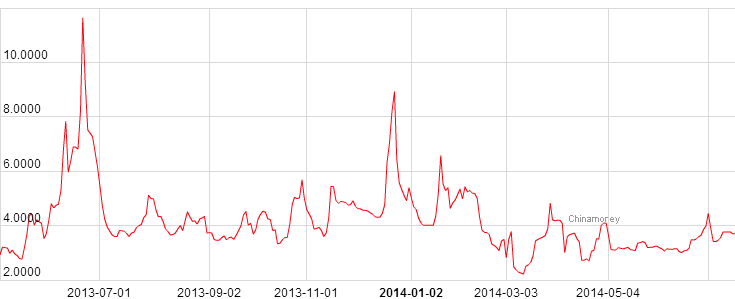Staying with the theme of central banks dampening market volatility, China’s central bank (the PBoC) has learned this game as well. China’s short term rates had experienced enormous volatility last year, and the PBoC has been focused on suppressing these fluctuations.
Reuters: – China’s decision to ease rules used to calculate loan-to-deposit ratios for Chinese banks (LDR) will moderate spikes in seasonal cash demand from regulatory requirements and thus help stabilise money market rates, traders say.Â
Regulators have been moving to stabilise money market rate volatility after a severe market squeeze in June last year rattled markets around the world, who misread a short-duration rise as a harbinger of money tightening.
It worked. The 7-day repo rate, which represents a fairly active secured lending market in yuan, has seen a substantial decline in volatility.
Â
 |
| China 7-day repo rate |
The combination of this policy to ease LDR rules and other stimulus efforts from Beijing has resulted in substantial increases in credit growth (see story) and quickened the expansion in broad money supply (see chart). It also translated into lower volatility in China’s stock market.
 |
| The Shanghai Composite Index - see chart for historical daily volatility |
Suppressing volatility has become a trend that is no longer limited to developed economies. Of course lower volatility is sure to result in declining return expectations and increased risk taking.

